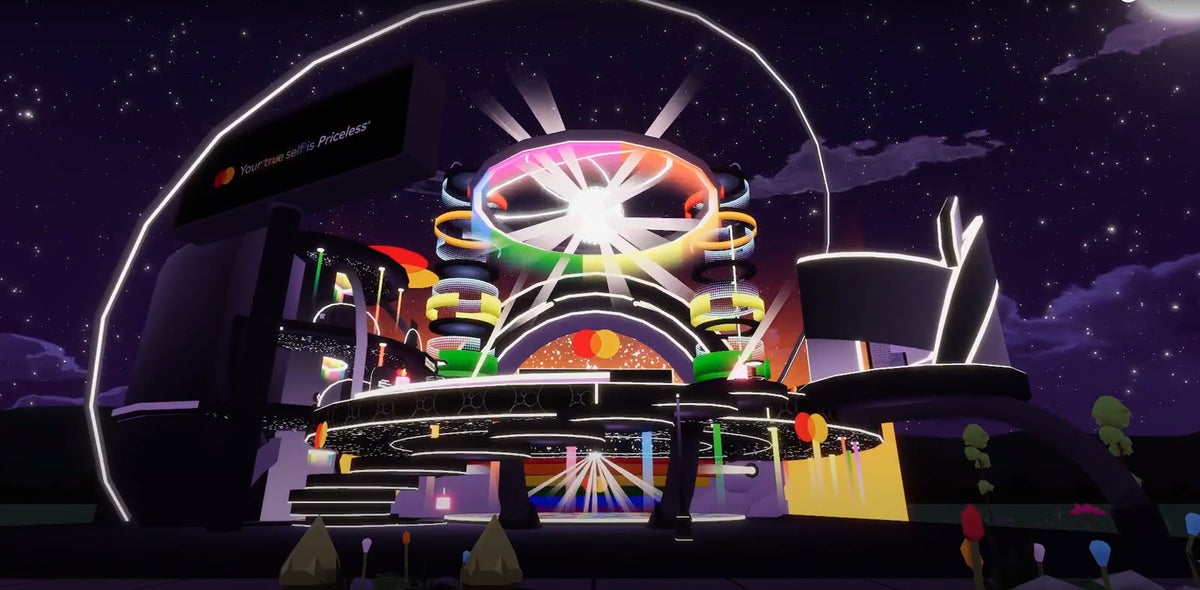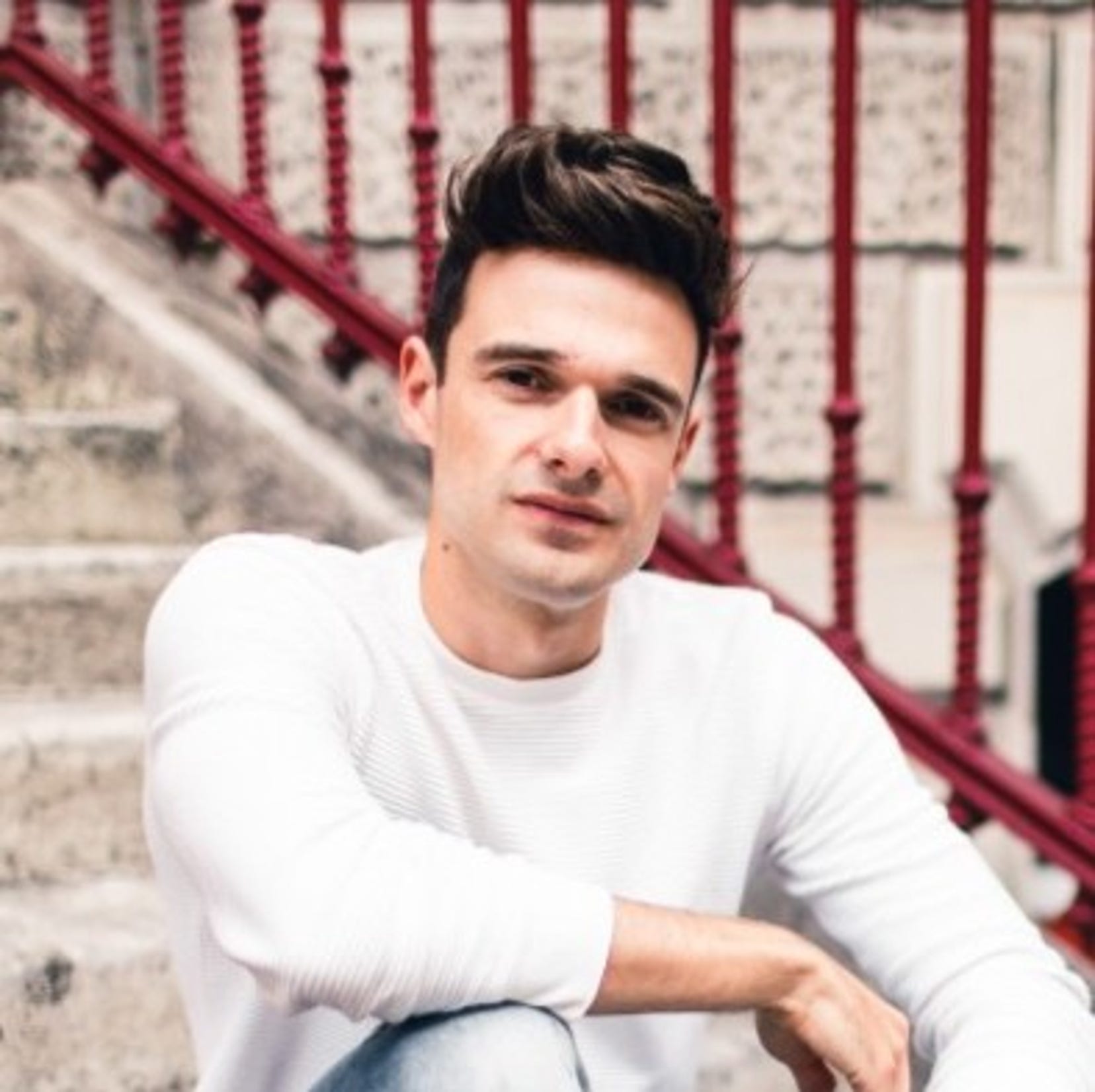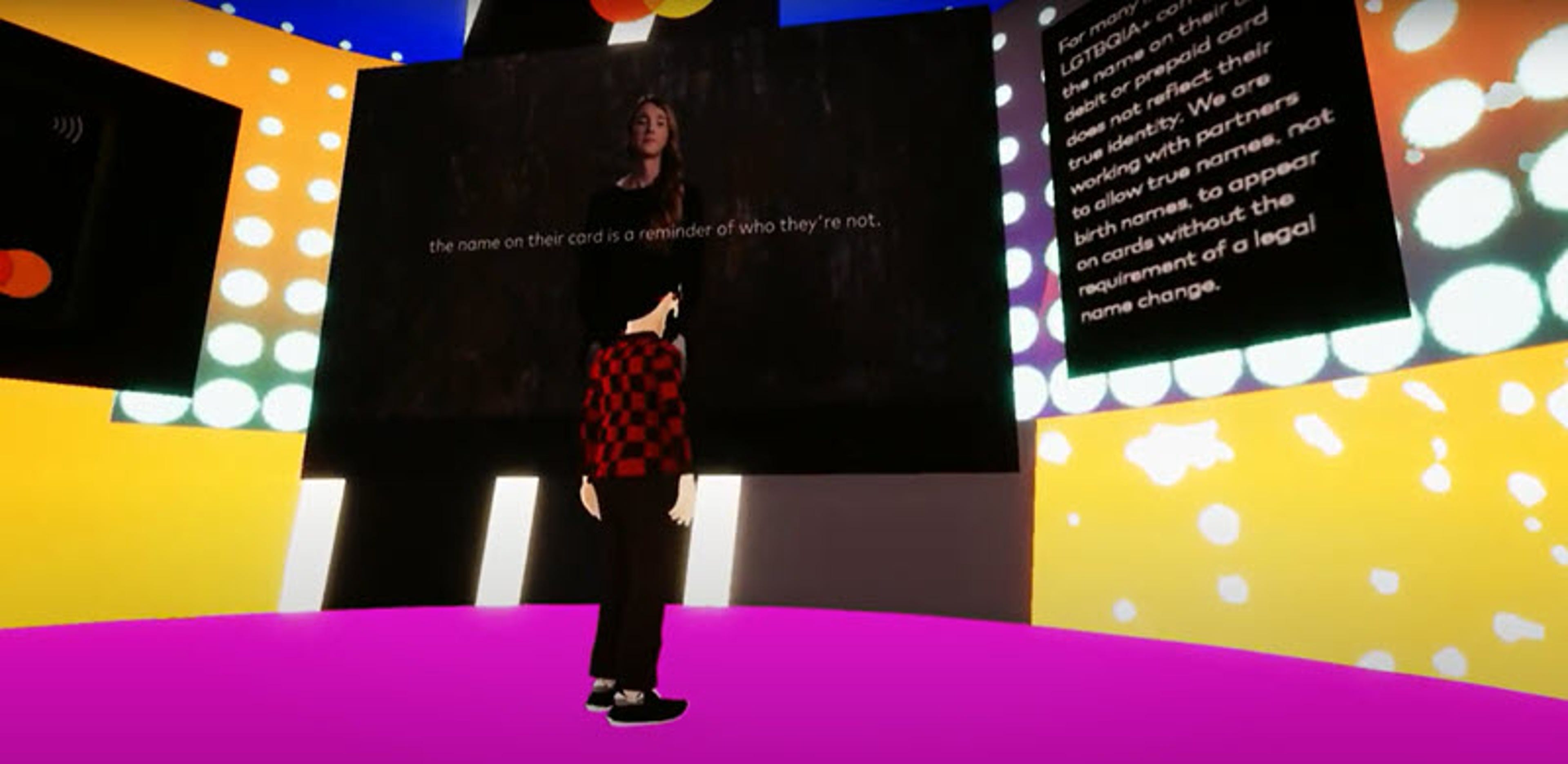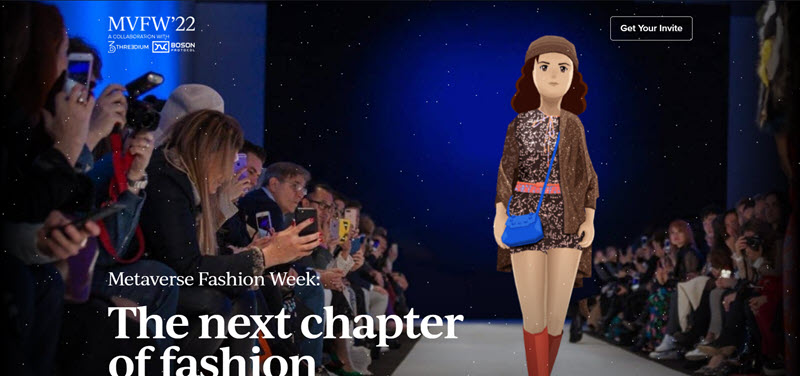See Ad Disclosure
The metaverse is going to be huge. Facebook changed its name to meet the opportunity. And yet, according to Statista, while there are 3 billion users on Facebook, only 50,000 are using Web3 virtual spaces.
There is tremendous potential — and investment — in the metaverse space. <//p>
In a recent report, "Metaverse Market" by Verified Market Research, the market size was valued at $27.21 billion in 2020 and is projected to reach $824.53 Billion by 2030, growing at a CAGR of 39.1% from 2022 to 2030.
It takes an enterprising party to declare itself the "largest building company" in a completely virtual space, but that is LandVault's claim to fame.
The companhy reports over 100 metaverse developers/artists, dozens of brand customers and $25 million in growth capital with a mission to help major brands make their entrees into the virtual space.
Recently, LandVault merged with in-game advertising provider Admix. In its press release, the newly merged company, which will operate under the name LandVault, will combine its cross-platform metaverse building experience and Admix's focus on creating non-intrusive in-game advertising to create more transactional and interactive immersive promotional experiences. The newly merged LandVault is valued at $300 million.
We spoke with CEO Sam Huber on our web show "Web3 Anarchy" to talk about the work that has been done so far and what's next for the biggest builder in the metaverse.
Sam Huber, CEO of LandVault.
BZ: What does it mean to be the biggest builder in the metaverse?
Huber: "We are focused on helping brands, IP and celebrities and anyone who wants to enter this new phase of the internet, the metaverse, and provide a one-stop shop for them.
We own a fair amount of land, and we rent to IP or brands who want to enter the space. We then have over 120 designers, builders, voxel editors and game developers to bring client projects and visions to life by actually building the activation. And we have the technology to monetize the experience, through product placement, for example. Or it could be through NFT sales, and in the future through other business models like fractionalization of the experience, for example. We put all of that together, and we are truly a one-stop shop helping brands enter the space. To date, we've done close to 200 builds."
What languages or engines do you use for your metaverse building?
"We rely on the tools the platform gives us, whether it's Sandbox or Decentraland. Those two platforms are based on Unity Engine, but they have their own builders. So Sandbox is a voxel-based ecosystem — everything you build is done by assembling little cubes. So you have limitations within what Sandbox allows you to do, and those limitations are also what make the platform special and allows graphics to be consistent.
We have teams that are initially game developers, either trained in Unity or Unreal Engine, but then they specialize in different platforms."
Which platform has the most user-friendly tools for building?
"We are very excited about NFT Worlds, which were built on top of the Minecraft engine. Obviously, they had a bit of a problem with Microsoft, so we're waiting to see what happens there. Sandbox and Decentraland are by far the two leaders on the market right now in terms of hype and excitement. In reference to their building tools, I'd say there's a long way to go. Platforms are working hard on providing better tools every day."
How do you take a metaverse building project from concept to realization?
"A great example is MasterCard. The MasterCard Pride Plaza was live through the last couple of months in Decentraland. We rented land to MasterCard with an area they could build on, then our creative team worked with the clients to try to bring their vision to life. That included sharing mockups, building assets, and showing them what it could look like, not just the environment but also the gaming mechanics — what are users actually going to do? How do you build exciting experiences?
In the case of MasterCard, they were doing drops of virtual fashion as NFTs. And we used the space to place their own brand within the environment.
There are plenty of other projects where we find other ways to monetize, whether they want to host a brand as a sponsor or an NFT drop or in the future other types of monetization. I think what's exciting about this Web3 economy is that it puts the user at the center not just as spectators, but in that they get to become an owner on the platform. And that's the big difference with Web3, right? If you want to create an experience, Roblox and Fortnight do an amazing job of that. But if you want to build a business, then you need to leverage the blockchain back end of Web3. We're not just creating experiences, but we to turn those into profit-making businesses."
Mastercard Pride Plaza learning experience.
Can you give us a more transactional metaverse implementation?
"If there is no blockchain in your metaverse, it's pretty much a game, right? What makes the metaverse different is the fact that it is on blockchain, so you have that concept of digital ownership, and users can be investors in the platform and can own land, build on it, and profit from it. In games, it's a one-direction economy because you can only spend money. In the metaverse, it's a multi-directional economy because you can also get paid.
A good example was the Metaverse Fashion Week at the end of March. We were one of the multiple vendors helping brands enter the metaverse. It was very much a decentralized event. And what was interesting is there are various brands, including L'Oreal, Tommy Hilfiger and others. And some of them were selling NFTS of virtual clothing or vouchers to unlock physical items.
Was Metaverse Fashion Week profitable?
"For certain brands, it certainly was. Even though the total number of people throughout the experience was not huge, the conversion rate was very high, like 60% or more, which is unheard of for any e-commerce website. It's so new that the audience is going there for a reason, and they're excited to buy.
Obviously, some activations worked better than others. But for brands, it was a way not only to be seen in the metaverse and get all the earned media and all the added value based on that but also to subsidize the event by selling products. We've seen that some of these brands are coming back for the next season. So it was certainly a great proof of concept."
Metaverse Fashion Week.
Do you see more brands taking their metaverse efforts beyond specialized events?
"It's day one right now. It's very early to say that that is not working or that it is just a fad. Brands are currently experimenting. They want to be early on the platform. But you know, being early on Facebook didn't really pay off in 2008 or 2009. It took time for the media to develop, and then all the learnings, all the lessons, and aggregating that early audience meant that some of the companies that jumped on those platforms early on became the biggest companies of today.
There are already brands that are going hard – Adidas, for example. They have a clear strategy for Web3, they own their land, and they're going to build on top of it. It's a long-term strategy. I think it will be increasingly clear over the next couple of years that the metaverse is here to stay."
How many of your metaverse projects are with brands that have long-term goals?
"I would say over 70% of all projects have a long-term component to them. So we built an HQ and it is there to stay. Then within the environment, we refresh the content. We do a launch every month or we bring on a celebrity or an influencer to bring their audience, or we create an NFT drop there at the request of the client. And building once is not enough, just like you need to keep feeding that Facebook account that Instagram page with your content. Metaverse is the same. You need new content to attract the users."
How important is gamification when you're creating a space in the metaverse?
"It's a matter of leveraging what the media has to offer. In this case, for the very first time, the brand has the ability to tell a story in a way that is not just text, images, and video but actually a game. It's not just a passive interaction. The customer is part of the experience, and they get to contribute to it and discover things. It has to be fun and engaging. It shouldn't feel like a promotional experience at all. I think we're just scratching the surface of the power of gamification for marketing. And the metaverse is the perfect playground to explore that further."
Where would you like to see metaverse building to deliver unique experiences?
"As the biggest builders, we feel the responsibility to build the metaverse that we want to see. It's not just about brands. No one wants to see a Metaverse that looks like a giant shopping mall. We need creators, studios and publishers that are creating games and know how to create engaging games that could have as a secondary utility to monetize it. But the first utility should be creating fun, engaging experiences. And that is what we tell all of our brands."
The Last Word
It's reassuring to speak to someone about the metaverse in anything other than the loftiest and most abstract terms. As always in the Web3 space, it's good to talk to someone who is actually building something.
In fact, if you look at the demands we make of blockchain projects in 2022 vs. the heady ICO days of 2017, it seems like a comparable balancing act — selling the limitless potential of the technology (as potentiality tends to be less limited) vs. the hard reality of what has already been done and can be done with the state of technology.
Huber made a fair point that these event-based implementations are just the starting point. Once more sophisticated brands add a compelling narrative to a sophisticated and gamefied way of selling with two-way transactions built into the story, they will have created something truly unique that doesn't need to attract an enormous audience to be worthwhile to brands.
At this point, the capital investment pouring into metaverse serves as a proof point for the enthusiasm of the future audience. Still, we are dealing with a discrete subset of users willing to make the leap right now — but if the creators and brands make something sufficiently entertaining people will go out of their way to be part of it.
It's hard to say how quickly the metaverse will develop or who will be the brands to make a big mark in the metaverse, but with LandVault at least we can hear the metaphorical sounds of sawing and hammering in the background. Real use cases by real brands perfecting a formula to attract and interact with customers. Given the time and resources, it's likely that they will soon get it right, and we will have our first superstar brands in the space.
© 2022 Benzinga.com. Benzinga does not provide investment advice. All rights reserved.
Ad Disclosure: The rate information is obtained by Bankrate from the listed institutions. Bankrate cannot guaranty the accuracy or availability of any rates shown above. Institutions may have different rates on their own websites than those posted on Bankrate.com. The listings that appear on this page are from companies from which this website receives compensation, which may impact how, where, and in what order products appear. This table does not include all companies or all available products.
All rates are subject to change without notice and may vary depending on location. These quotes are from banks, thrifts, and credit unions, some of whom have paid for a link to their own Web site where you can find additional information. Those with a paid link are our Advertisers. Those without a paid link are listings we obtain to improve the consumer shopping experience and are not Advertisers. To receive the Bankrate.com rate from an Advertiser, please identify yourself as a Bankrate customer. Bank and thrift deposits are insured by the Federal Deposit Insurance Corp. Credit union deposits are insured by the National Credit Union Administration.
Consumer Satisfaction: Bankrate attempts to verify the accuracy and availability of its Advertisers’ terms through its quality assurance process and requires Advertisers to agree to our Terms and Conditions and to adhere to our Quality Control Program. If you believe that you have received an inaccurate quote or are otherwise not satisfied with the services provided to you by the institution you choose, please click here.
Rate collection and criteria: Click here for more information on rate collection and criteria.




